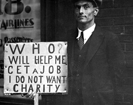
Introduction
The Utilitarian Vision of Henry Ford
General Motors Style Overtakes Ford Efficiency
The Changing American Character
The Struggle for Styling in the Early Industry
The Depression Era Battle for Streamlining
The Triumph of Stylists in the 1950s
Contradictions of Fantastic Styling and the Stylists' Fall From Grace
Stylists Fight Back with "AERO"
Postindustrial Lifestyle Cars & The New Balance of Power Between Engineers and Designers
Complete Text Printable View
Tough Guys and Pretty Boys:
The Cultural Antagonisms of Engineering and Aesthetics in Automotive History
The Depression Era Battle for Streamlining
Although Earl's entertainment philosophy gained ground over the engineers' efficiency at GM and throughout the industry, automobile stylists continued to face formidable challenges. The years of the Great Depression were crucial. America’s consumer society was just getting off the ground when the economy crashed, touching off renewed class conflict. But business leaders offered the nation a way out of the crisis--consumer engineering and streamlining. Believing that the Depression was caused by consumers’ unwillingness, not inability, to buy, they proposed to apply science and technology to consumption, making the design and selling of products as rational and efficient as their production. Streamlining was part of this strategy, an attempt to use the science of aerodynamics to create advanced, fast-moving transportation machines that cut effortlessly and efficiently through the air and stimulated the interest of reluctant consumers.
The automobile was certainly a candidate for improvement through streamlining. Industry engineers sought to use the science of aerodynamics to seize full control of auto design back from the encroaching stylists and turn it once again into a utilitarian activity. During the Depression the Chrysler Corporation, which was still a stronghold of no-nonsense auto engineering, took the lead in functional streamlining. In 1934 it introduced a radically streamlined car, the Airflow, which was engineered by Fred Zeder, Owen Skelton, and Carl Breer. It was a marvel of functional engineering, designed from bumper to bumper for efficiency and safety. The Airflow introduced several revolutionary engineering innovations: unitary body construction, which made the frame and body one strong, stress-bearing unit; a new auto geometry that placed the seats entirely between the axles, making for a smoother ride; and a sleek, aerodynamically engineered body that reduced the drag coefficient and saved fuel. But it was a commercial disaster, with poor sales nearly sending Chrysler into bankruptcy. The problem with the Airflow was not only that its sloping hood and curving forms departed too radically from the traditional look of cars. The car’s design was also too reminiscent of the machines of mass production, to whose ruthless efficiency many Americans attributed the unemployment of the period. Industry stylists like Harley Earl jeered the engineers’ failure, and introduced their own vision of aesthetic streamlining. Although totally conventional in engineering, these aesthetically streamlined cars, like the 1936 Lincoln Zephyr, had the sleek and exciting look of rounded airplanes and trains, and they sold extremely well. The stylists again triumphed, as the aesthetic illusion of technological progress took precedent over its engineered reality. By the end of the 1930s, Harley Earl had gained complete control over the design of cars for all of GM’s divisions, and stylists in other automakers also made inroads into the power of engineers.
<<Previous Section - Next Section>>
©2004 Automobile in American Life and Society


